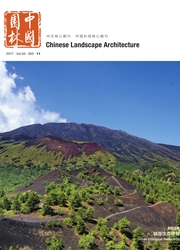

 中文摘要:
中文摘要:
风景名胜区的交通便捷程度越来越受到大家关注,通过综合交通可达性、省内公路网密度以及区位优势度3个要素的综合集成,探讨了列入世界遗产名录的风景名胜区交通优势度的空间格局。研究发现,世界遗产级风景名胜区总体交通优势度偏低,极少数风景名胜区具有非常较高的交通优势度。世界遗产级风景名胜区交通优势度整体呈现东高西低、局部突出的格局;以人文特点为主的风景名胜区交通优势度高于以自然特点为主的风景名胜区;交通优势度是游客量的重要影响因素。
 英文摘要:
英文摘要:
It has received more attention recently that how to evaluate the extent of convenient travel to famous scenic sites. Based on the scenic areas which had been included in the World Heritage List, this article analyzes the pattern of transportation superiority in the aspects of the integrated transportation accessibility, the surrounding highway network density and the superiority degree of location, select four indicators(area available for travel, maintenance expenses, visitors aboard amounts and the degree of transport superiority) as the explanatory variables of the tourist amount, and create the multivariate linear model. And it selects eight indicators such as famous scenic site income, maintenance expenditure, to get the development level of famous scenic sites by principal component analysis. This study reveals that, most of the famous scenic sites have inferior transport superiority degree and the traffic environment there is poor and impedes the famous scenic site development. By contrast, few of them have prominent transport superiority degree. On the whole, the eastern part in China has higher transportation superiority than the western, but some areas show the exception; the transportation superiority degrees of the scenic areas dominated by humane features are higher than that dominated by natural features, and the transportation superiority degree of the scenic areas in urban landscape or memorial places is highest; the transportation superiority is an important influence factor of the tourist amount, while it needs to study whether the transportation superiority of famous scenic sites have a direct effect on the development level of famous scenic sites.
 同期刊论文项目
同期刊论文项目
 同项目期刊论文
同项目期刊论文
 期刊信息
期刊信息
